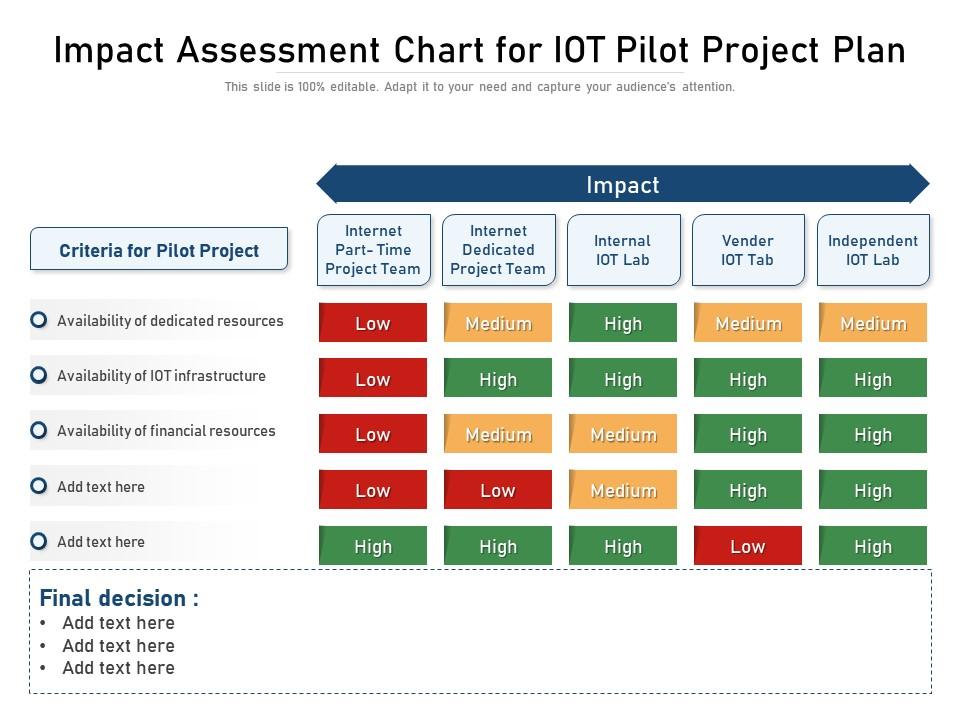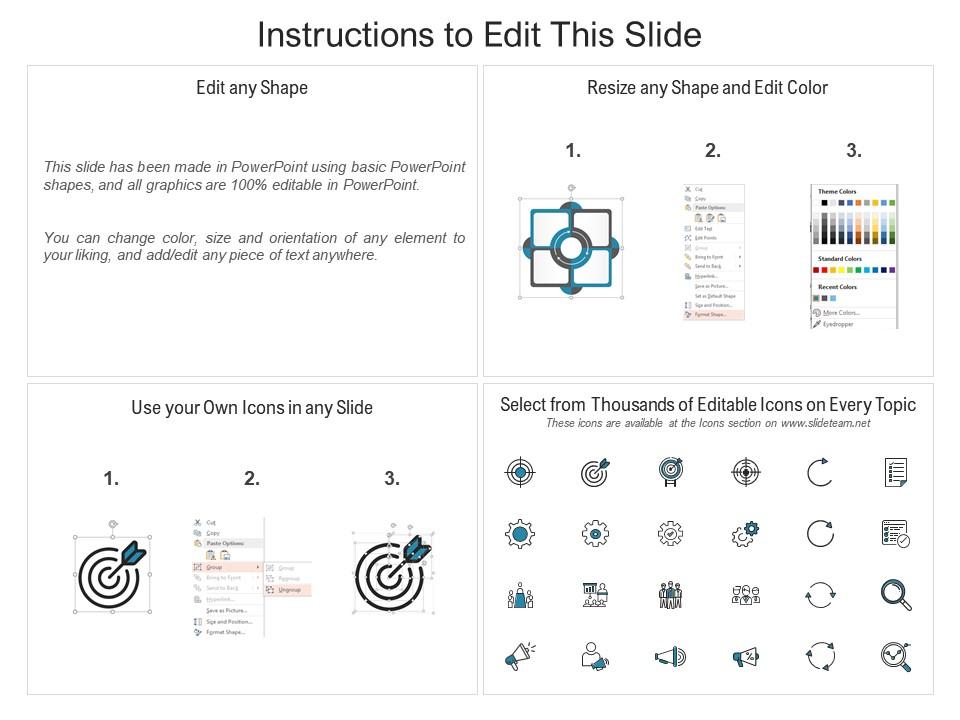Impact assessment chart for iot pilot project plan
Our Impact Assessment Chart For IOT Pilot Project Plan are topically designed to provide an attractive backdrop to any subject. Use them to look like a presentation pro.
Our Impact Assessment Chart For IOT Pilot Project Plan are topically designed to provide an attractive backdrop to any subj..
- Google Slides is a new FREE Presentation software from Google.
- All our content is 100% compatible with Google Slides.
- Just download our designs, and upload them to Google Slides and they will work automatically.
- Amaze your audience with SlideTeam and Google Slides.
-
Want Changes to This PPT Slide? Check out our Presentation Design Services
- WideScreen Aspect ratio is becoming a very popular format. When you download this product, the downloaded ZIP will contain this product in both standard and widescreen format.
-

- Some older products that we have may only be in standard format, but they can easily be converted to widescreen.
- To do this, please open the SlideTeam product in Powerpoint, and go to
- Design ( On the top bar) -> Page Setup -> and select "On-screen Show (16:9)” in the drop down for "Slides Sized for".
- The slide or theme will change to widescreen, and all graphics will adjust automatically. You can similarly convert our content to any other desired screen aspect ratio.
Compatible With Google Slides

Get This In WideScreen
You must be logged in to download this presentation.
PowerPoint presentation slides
Introducing our Impact Assessment Chart For IOT Pilot Project Plan set of slides. The topics discussed in these slides are Resources, Infrastructure, Financial. This is an immediately available PowerPoint presentation that can be conveniently customized. Download it and convince your audience.
Content of this Powerpoint Presentation
Description:
The image portrays an Impact Assessment Chart meticulously designed as a presentation slide, primarily intended to facilitate project planners and stakeholders in the comprehensive evaluation of various critical factors that can significantly influence the potential success of an IoT (Internet of Things) Pilot Project Plan. This chart provides a structured framework for assessing and analyzing the impact of diverse criteria on the feasibility and execution of IoT pilot projects.
Here's a detailed breakdown of the chart's key elements:
1. Criteria:
The left side of the chart lists specific criteria that are pivotal in evaluating the setup and execution of an IoT pilot project. Notable criteria include 'Availability of dedicated resources,' 'Availability of IoT infrastructure,' and 'Availability of financial resources.' These criteria serve as essential benchmarks for project planners to consider.
2. Assessment Scenarios:
For each criterion, five distinct setup scenarios are presented, encompassing various approaches or conditions for executing the IoT pilot project. These scenarios include 'Internet Part-Time Project Team,' 'Internet Dedicated Project Team,' 'Internal IoT Lab,' 'Vendor IoT Tab,' and 'Independent IoT Lab.' Each scenario is associated with an impact assessment level indicated by color-coded labels—Low (Red), Medium (Yellow), and High (Green).
3. Additional Assessment Categories:
Beneath the criteria and assessment scenarios, there are additional fields provided for users to insert text related to further assessment categories. These fields are intentionally left blank to encourage customization, enabling project planners to incorporate additional factors or considerations specific to their project's context.
4. Final Decision Section:
The chart also includes a designated section labeled 'Final decision.' This section serves as a space where project planners can summarize their key findings, draw conclusions, and outline recommended action steps based on the impact assessment.
Use Cases:
The Impact Assessment Chart for IoT Pilot Project Plans serves as a versatile tool applicable across a range of industries and scenarios where IoT projects are being considered or planned. Here are seven industries where this slide can prove highly beneficial:
1. Technology:
Use: Assessing readiness and planning for IoT project deployment.
Presenter: Project manager or IoT consultant.
Audience: Project stakeholders and technical teams.
2. Manufacturing:
Use: Evaluating the infrastructure and resource allocation for IoT integration in manufacturing processes.
Presenter: Operations manager or technology strategist.
Audience: Senior management and operations team.
3. Energy:
Use: Impact analysis for smart grid or smart metering pilot projects.
Presenter: Innovation director or smart technology coordinator.
Audience: Utility managers, engineers, and financial analysts.
4. Healthcare:
Use: Determining the feasibility of IoT implementations in healthcare facilities.
Presenter: Health informatics specialist or medical equipment planner.
Audience: Hospital administrators and IT department staff.
5. Transportation and Logistics:
Use: Planning IoT solutions for fleet management or logistic operations.
Presenter: Logistics planner or innovation officer.
Audience: Fleet managers and supply chain stakeholders.
6. Retail:
Use: Strategy planning for smart inventory or customer engagement solutions using IoT.
Presenter: Retail technology advisor or CIO.
Audience: Retail executives and marketing team.
7. Agriculture:
Use: Analyzing resource and technology needs for precision farming pilot projects.
Presenter: Agrotechnology expert or R&D manager.
Audience: Agribusiness investors and farm operation managers.
Impact assessment chart for iot pilot project plan with all 2 slides:
Use our Impact Assessment Chart For IOT Pilot Project Plan to effectively help you save your valuable time. They are readymade to fit into any presentation structure.
No Reviews












